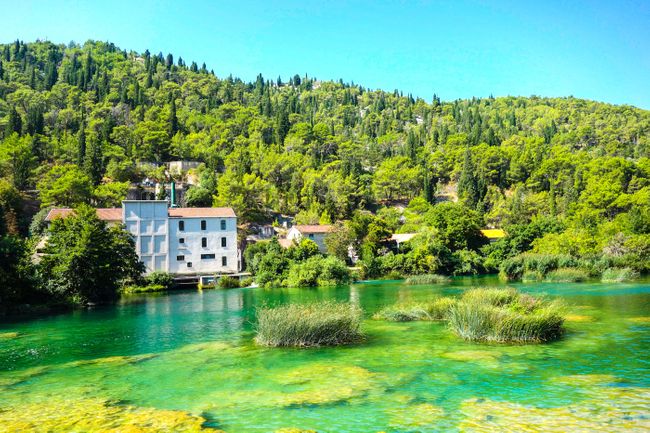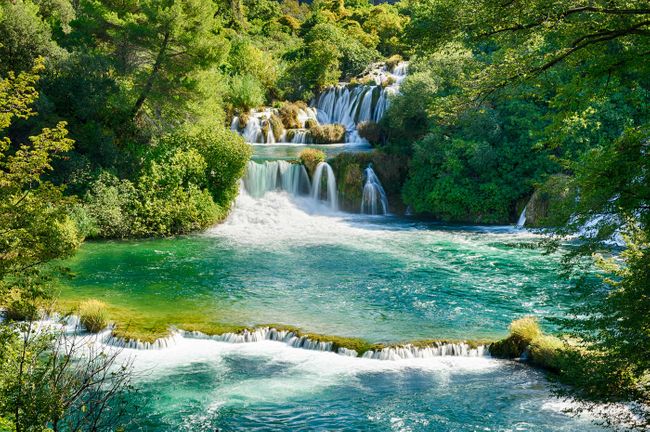From Skradinski Buk the river is navigable all the way to the Adriatic Sea. As well as the opportunity to swim, there are a series of walkways that really open up this most impressive of natural wonders. Make time to walk the 2km ‘Educational Trail’, which snakes around the falls.
Most visitors stick to the main waterfalls, but it’s worth breaking away from the throng to discover Manojlovac Slap - which locals insist is the park's most spectacular.
The park’s highest waterfall dropsa whopping 59.6m across a 500m long stretch of the river that culminates in a series of abandoned watermills.
Best come in spring for Manojlovac Slap, as water is often drawn off to supply the Miljacka hydroelectric plant in summer. The best view is from the Bukovac side on the Knin-Kistanje road. Note that there are no walking trails down here.
Man has put all that gushing water to good use over the years, though. The lasting legacy is the pre-industrial watermills in the national park.
Many visitors skip by these in their determination to ‘do’ Skradinski Buk and the Visovac Monastery. Make time to check them out properly and you gain an insight into the local culture and history of the area, which has very much been shaped by the lifeblood Krka. You can learn about the techniques used to generate power, the milling itself and what goods they produced.
Visiting Visovac Monastery
Postcard-ready, and in the middle of Visovačko Lake, is the Franciscan monastery of Visovac.
Originally, the eponymous island was settled by an order of Augustinian monks who established a modest monastery and the Church of Our Lady of Mercy here in the 14th century.
In 1445, the Franciscans arrived from Bosnia and extended the site, before building a new monastery in the 18th century. Interestingly, parts of the 1400s monastery building still remains to this day.
Make sure to explore its collection of ecclesial clothing and also the library, which is home to a rare early edition of Aesop's Fables. Short tours of the monastery are included in the Krka National Park ticket price.
One more thing...
Note that large sections of land were heavily mined in the 1990s during the Croatia’s Homeland War.
Tourist areas and paths have been de-mined, but going off piste in the upper sections of the park and outside its boundaries is not recommended.
Discover more of Europe's national parks:













